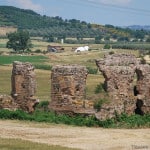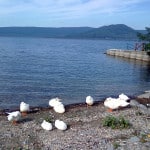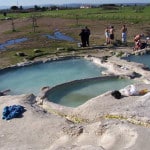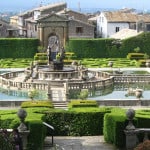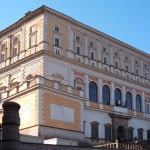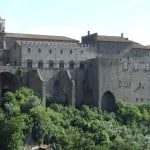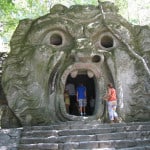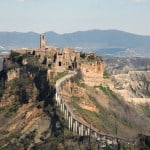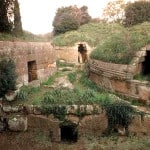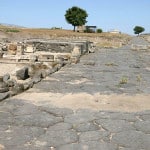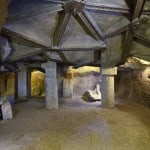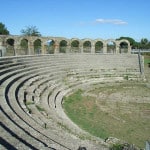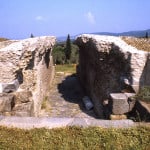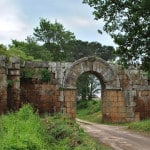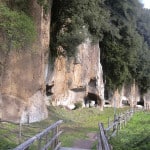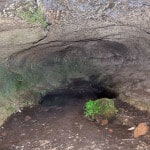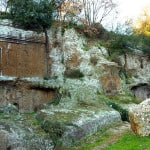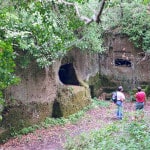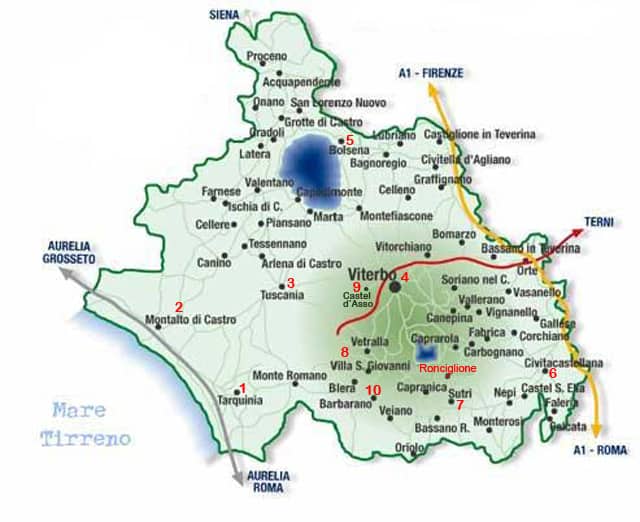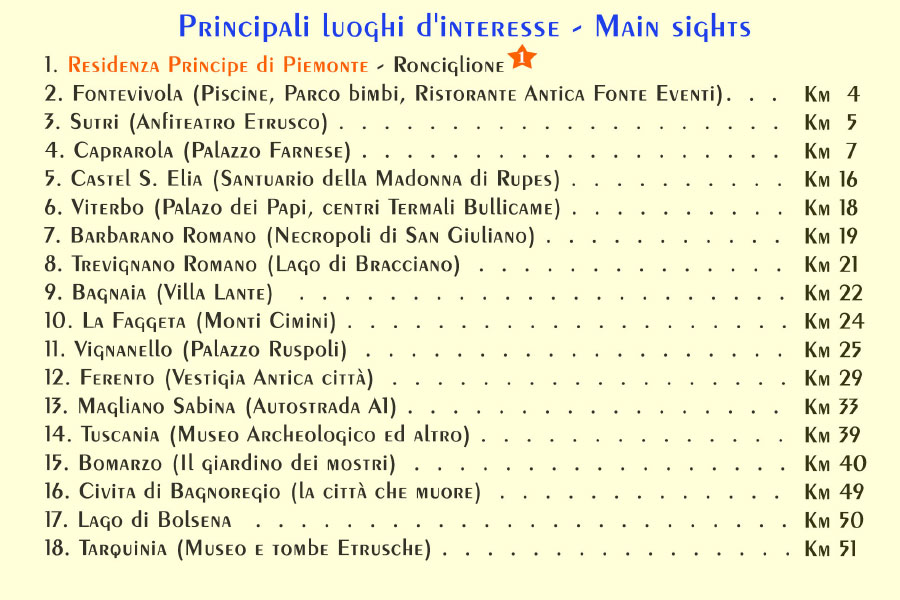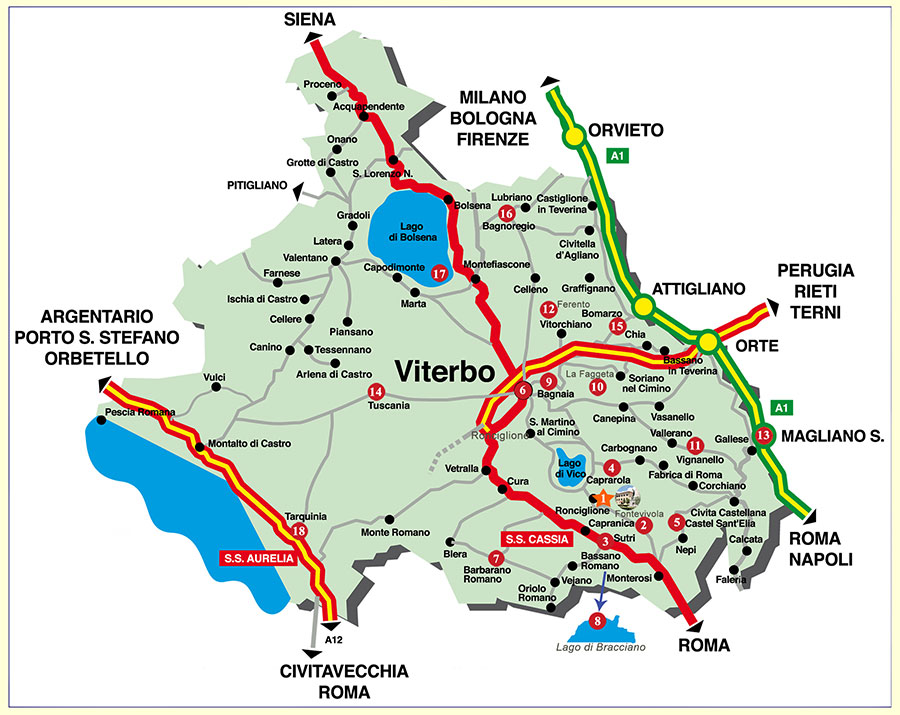The ancient Etruria, also called Tuscia, covers about 3,600 square kilometers between Rome, Tuscany and Umbria. It is an intact and welcoming land, with open spaces and unspoilt medieval villages. Everywhere, from the mountains to the sea, you can admire the splendid examples of an immense monumental heritage, unique and unrepeatable, with a myriad of Etruscan necropolis, Roman ruins, castles, churches and palaces that reveal the important cultural and artistic evolution experienced by this earth over the centuries.
The Vico Lake, near Ronciglione and the forests of the Cimini Mountains, surrounded by hazelnut trees that have been the riches of the area for centuries, is the most "natural" of this part of Lazio, and is protected by a vast nature reserve. Beautiful trails on foot, by bike, or by zigzagging horseback in the protected area. Practice birdwatching in cabins or canoe, to approach in absolute silence in the reeds where you can admire mallards, teals, ladlers and many other birds.
The volcanism of Lazio also offers spectacular endogenous manifestations in the form of hot springs, is the famous Bullicame of Viterbo, also mentioned by Dante, with water above 60 degrees. Today, in addition to various treatments, you will find various spas for those who are trying to detoxify, fight stress and cultivate beauty. The spa area of Viterbo is integrated with the green Cimini mountains, the natural reserve of the lake, where you can enjoy the serenity and all the benefits of a hot bath.
Bomarzo, a village in Lazio at the foot of Monte Cimino, has a unique work in the world, the Villa delle Meraviglie, also called Sacro Bosco, often called Parco dei Mostri. It was designed by prince Vicino Orsini and the great architect Pirro Ligorio in 1552. The park, although fully integrated into the erudite architectural-naturalist culture of the second half of the sixteenth century, is unique. The refined Italian gardens are built on geometric and perspective rationality criteria. with ornaments such as large terraces, fountains with water features and Mannerist sculptures. On the contrary, the cultivated prince of Bomarzo dedicated himself to the creation of an eccentric "grove" by sculpting in the pebbles, emerging from the ground, enigmatic figures of monsters, dragons, mythological subjects and exotic animals, which he adapted to a leaning cottage, a funeral temple, fountains, seats and obelisks on which he had mottos and inscriptions engraved. The Sacred Forest, not respecting the sixteenth century customs, presents itself as an irregular solution; the different elements are disconnected from any perspective relationship and are not united by consistency of proportions. Everything is invented with iconological criteria that escape even the most passionate scholars, a real labyrinth of symbols that surrounds those who enter physically or intellectually. These are the reasons that have inspired many artists of the time, such as Annibal Caro, Bitussi and Cardinal Madruzzo. Following the death of Vicino Orsini, no one cared more about this place than after centuries of neglect was re-evaluated by intellectuals and artists such as Claude Lorrain, Johann Wolfgang von Goethe, Salvador Dali, Mario Praz and Maurizio Calvesi. "In Bomarzo the scenic fiction is overwhelming, the observer can not contemplate because it is immersed in a cog of sensations, able to confuse ideas, emotionally overwhelm, to engage in a dreamlike, absurd, playful and hedonistic world". (Bruno Zevi, Baroque Enlightenment, Rome, 1995)
Villa Lante, a few km. away from Ronciglione to Bagnaia (VT) is certainly one of the pearls of Italian art treasures. With its park that covers about four hectares, it was built at the end of the 4th century, but reached its triumphal period with the implementation of its "garden" by Jacopo Del Duca around 1560. It is a series of beautiful buildings, fountains and three monumental terraces in progression up to a height of 16 meters.
Palazzo Farnese, overlooking the town of Caprarola, was built by Jacopo Barozzi, so called the Vignola, and commissioned by Pope Farnese Paolo III. The plan of the building, designed by pentagonal sections, was the residence of the family, for guests and for the public for various receptions. The courtyard is a perfect circle and the beautiful Scala Direction of ellipsoidal shape, in order to allow access also to the carriages up to the upper floors. All the interior rooms are richly frescoed and furnished and each has its own name: Jupiter, Spring, Solitary, until you find the one that enhances the Casa Farnese, the Sala dei Fasti Farnesiani.
Viterbo, has a large central area with the walls of the medieval city, surrounded by modern districts, except in the south-west, where are the archaeological and thermal sites (necropolis of Castel d'Asso, source of Bullicame). Viterbo is known as the "City of the Popes", in fact, in the thirteenth century, the papacy was installed for about 24 years and the Palace of the Popes of Viterbo has also hosted the election of several popes and their daily lives.
Civita di Bagnoregio, inhabited by about ten people and situated in an isolated position, can only be reached by means of a reinforced concrete pedestrian bridge built in 1965 [1]. The bridge can only be walked on foot, but recently the town of Bagnoregio, meeting the needs of those who live or work in this place, issued a circular stating that, at certain times, residents and authorized persons can cross the bridge on board of cycles and motorcycles. The cause of its isolation is the progressive erosion of the hill and of the surrounding valley, which gave life to the typical shapes of the gullies and which continues today, risking to make the village disappear, this is also called "the dying city" or, more rarely, "the dying country".
Civita was founded 2500 years ago by the Etruscans. It stands on one of the oldest streets of Italy, joining the Tiber (then the great navigation route of Central Italy) and the lake of Bolsena.
The ancient town of Civita was accessed via five doors, while today the door known as Santa Maria or Cava, is the only access to the country. The urban structure of the entire town is of Etruscan origin, consisting of thistles and decumans according to the Etruscan and then Roman use, while the entire architectural lining is medieval and Renaissance. There are numerous testimonies of the Etruscan phase of Civita, especially in the area called the old San Francesco; in fact in the cliff below the belvedere of San Francesco Vecchio was found a small Etruscan necropolis. Also the cave of San Bonaventura, in which it is said that San Francesco healed the little Giovanni Fidanza, who later became San Bonaventura, is actually an Etruscan chamber tomb. The Etruscans made Civita (of which we do not know the ancient name) a thriving city, favored by its strategic position for commerce, thanks to its proximity to the most important communication routes of the time.
TARQUINIA 1)
- ETRUSCAN NECROPOLIS OF MONTEROZZI
- ETRUSCAN NATIONAL MUSEUM
- ACROPOLIS: The remains of the "REGINA ARA" Temple
VULCI 2) - NATIONAL ARCHAEOLOGICAL MUSEUM (Castello di Badia)
- NECROPOLIS OF THE BROKEN BRIDGE (The tombs of François)
- ACROPOLIS (Archaeological Park)
TUSCANIA 3)
- ARCHAEOLOGICAL NATIONAL MUSEUM
- NECROPOLIS OF THE OLIVE VIRGIN (Tomb of the Crown, Tomb of the Queen)
VITERBO 4)
- ARCHAEOLOGICAL NATIONAL MUSEUM
- EXCAVATIONS OF FERENTO
BOLSENA 5)
- TERRITORIAL MUSEUM of Lake Bolsena
- EXCAVATIONS OF VOLSINII
CIVITA CASTELLANA 6)
- ARCHAEOLOGICAL MUSEUM OF AGRO FALISCO
- EXCAVATIONS OF FALERI NOVI
SUTRI 7)
- AMPHITHEATER AND ARCHAEOLOGICAL PARK
NORCHIA 8)
- THE NECROPOLIS with rock tombs in the river Pile
CASTEL D'ASSO 9)
- THE NECROPOLIS SUGGESTION OF CASTEL D'ASSO (VT)
BARBARANO ROMANO 10)
- THE NECROPOLIS OF SAN GIULIANO, Marturanum Park
 English
English  Italiano
Italiano 

